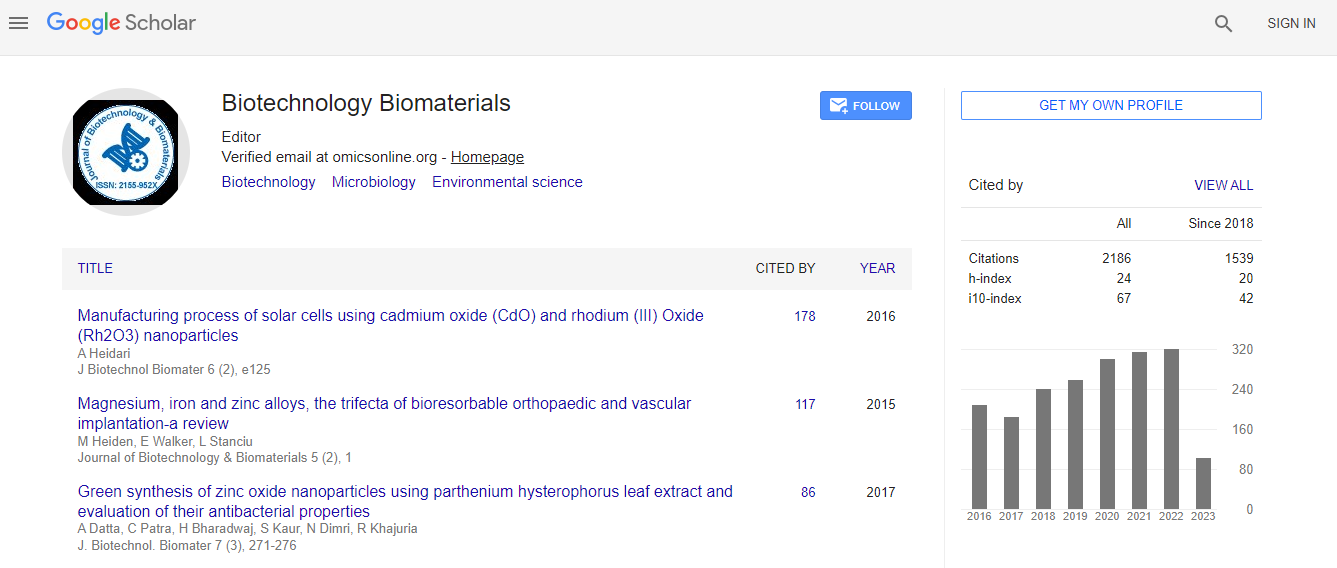Advances in Biohybrid Materials: Merging Biological Cells and Synthetic Polymers for Smart Medical Devices
*Corresponding Author: Abdullah Katarzyna, Department of Physical Chemistry and Technology of Polymers, Silesian University of Technology, Poland, Email: Abdullah.k.9090@gmail.comReceived Date: Nov 05, 2024 / Published Date: Nov 29, 2024
Citation: Abdullah K (2024) Advances in Biohybrid Materials: Merging Biological Cells and Synthetic Polymers for Smart Medical Devices. J Biotechnol Biomater, 14: 418.
Copyright: © 2024 Abdullah K. This is an open-access article distributed under the terms of the Creative Commons Attribution License, which permits unrestricted use, distribution, and reproduction in any medium, provided the original author and source are credited.
Abstract
The integration of biological cells with synthetic polymers, leading to the development of biohybrid materials, has opened new avenues in the field of smart medical devices. Biohybrids combine the unique properties of living cells, such as adaptability, self-regeneration, and responsiveness, with the versatility and durability of synthetic polymers. These materials offer significant potential for enhancing the functionality and biocompatibility of medical devices, including sensors, drug delivery systems, and prosthetics. This review explores recent advances in the fabrication, properties, and applications of biohybrid materials, focusing on their role in enabling next-generation medical devices. Key challenges, such as optimizing cell-polymer interactions, ensuring long-term stability, and addressing ethical considerations, are also discussed. The convergence of biology and materials science promises transformative innovations in personalized medicine, offering the potential to develop devices that are not only functional but also biologically integrated and responsive

 Spanish
Spanish  Chinese
Chinese  Russian
Russian  German
German  French
French  Japanese
Japanese  Portuguese
Portuguese  Hindi
Hindi 
